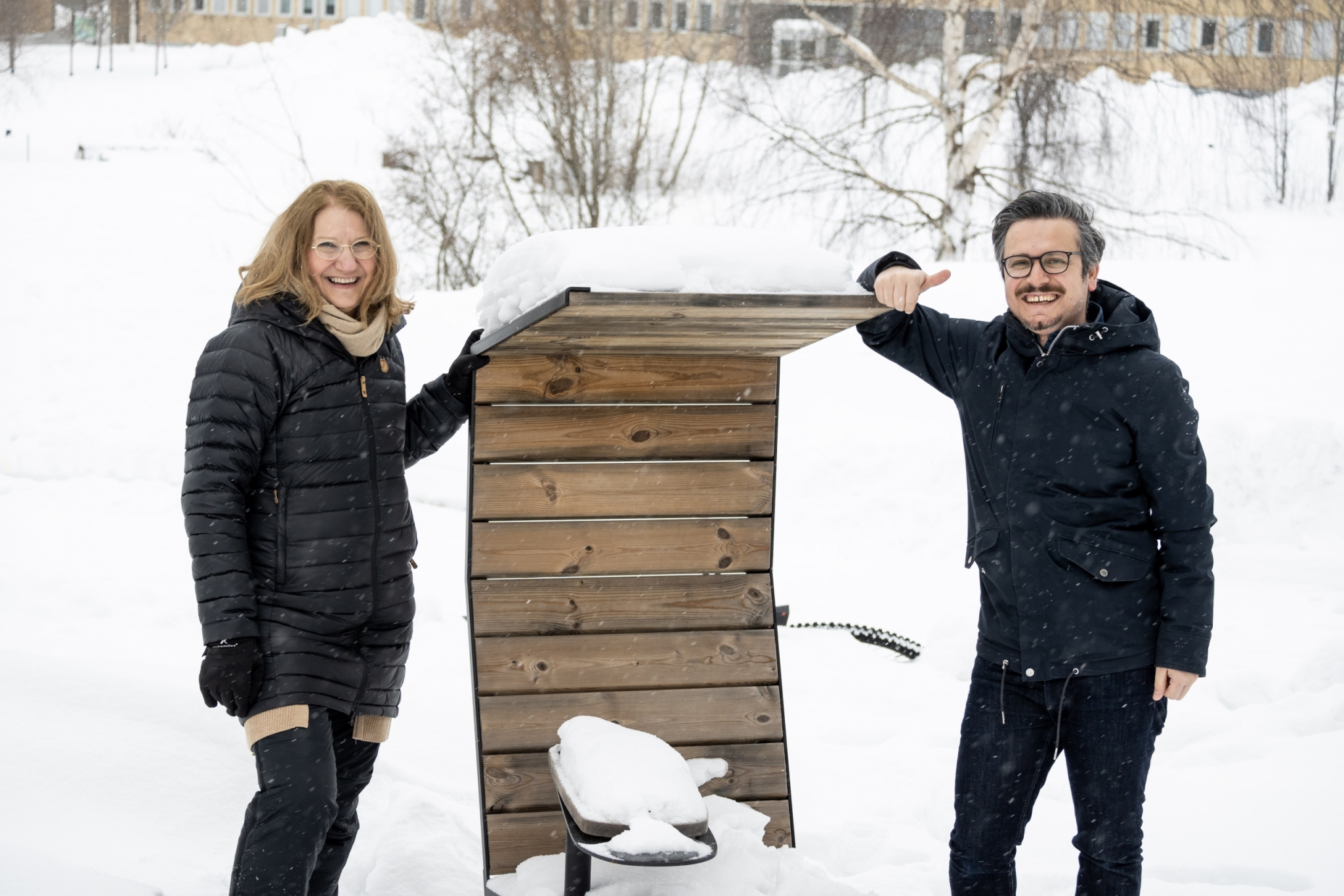Finding a new way to uncover targets for future antibiotics
How do you take great ideas and turn them into innovative research? In this case the Integrated Science Lab, IceLab, offered up some help in the form of funding for a postdoc who could act as a bridge between computational and experimental research areas, launching a project by Professor Maria Fällman and Senior Research Assistant Kemal Avican, both at the Department of Molecular Biology.
Text: Gabrielle Beans
Data generation in a molecular biology lab, sampling of human specimens from clinics and data analysis in a computational lab – all these ingredients make Professor Maria Fällman’s and Senior Research Assistant Kemal Avican’s project interdisciplinary.
Collaboration and genuine interest in research taking place outside of your expertise are at the core of interdisciplinary research. Maria Fällman and Kemal Avican have been working together for a long time, aiming to uncover new targets for future antimicrobials to fight the threat of antibiotic resistance. Along the way, they established a database of stress responses of 32 clinically important human bacterial pathogens to twelve different conditions mimicking the human body.
On top of this lab-generated data, they were interested in enriching the dataset with data obtained from patients with severe bacterial infections, specifically all the pathogens’ transcribed gene products (RNA) in those patients. With this combined dataset, they saw the potential of comparing gene expression across different pathogens to identify patterns related to the pathogens’ stress responses, both for understanding those responses as well as identifying candidate genes to target in antibiotic development. Great idea, but there were a couple of issues.
What were the issues?
Maria Fällman: We realized that expertise in system biology and machine-learning approaches would be crucial for this type of project. Further, Kemal Avican was also involved in developing protocols for extraction of bacterial RNA from complex samples containing host tissue material with the goal to be able to retrieve bacterial RNA from patient samples to gain information of bacterial gene expression from “real infections” in mouse, but also humans.
Kemal Avican: We realized that such a dataset would be very big and too complex for our mathematical and computational skills to analyse.
How did you move past that issue to a funded project?
Kemal Avican: We looked for experts and IceLab was in first place as we had heard about it for a long time with its interdisciplinary research environment. It wasn’t difficult to realize that Martin Rosvall would be the person to contact since his research profile fits very well with what we wanted to do. Then, we proposed the idea to Martin in a meeting. He was very interested in the idea from the very beginning, which made us to think that we really had a good match for the project.
Maria Fällman: We also contacted Johan Normark at the Infection Clinic proposing our initial ideas, which resulted in a common project proposal, and then we involved Christer Mehle from Orthopedics who is an expert in bacterial biofilm infections. We were successful in funding the project with an Icelab Multidisciplinary Postdoctoral Fellowship, and Leyden Fernandez started work as the postdoc on this project in December 2020.
What excites you the most about this project?
Maria Fällman: I am excited about many aspects; one is the possibility to retrieve gene expression patterns from bacteria at the infection site and from there, by utilizing systems biology and recent machine learning approaches to be able to extract novel information of both common and species-specific adaptation strategies. Here I foresee that we will find new information that never would have been found with conventional methods. Another is the possibility to get functional information of genes without known function, which both are abundant and differently expressed under different conditions, but which we know very little about today.
Kemal Avican: I think the depth and the complexity of the data itself is very exciting as it contains a lot of unknown mechanisms and functions to be explored in order to understand how bacteria adapt to human hosts. Especially the idea of finding targets for novel antibiotics to treat biofilms is super exciting.
What tips do you have for researchers that want to collaborate outside of their own discipline?
Maria Fällman: They should absolutely go ahead and test their ideas with potential collaborators. Combined knowledge and skills allow you to answer questions that you cannot solve by yourself and during the course of the project, you likely will get new great ideas that you would not have gotten if you had stayed within your expertise area.
Kemal Avican: I think collaborators from other disciplines than yours must also be as excited as you. Their interest plays a critical role for their engagement to the research questions and that makes it easy to communicate and deepen the discussions to use their expertise impactfully. Of course, such interest makes them devote enough time to work on the project also.
More information about PATHOgenex
This postdoctoral fellowship is funded by a Kempe Foundation award to Icelab to foster new multidisciplinary projects. Three projects were funded in 2020, with the potential to fund three more in 2021 and 2022. The team collaborating on this project are: Leyden Fernandez (Icelab postdoctoral fellow), Maria Fällman (Professor at Department of Molecular Biology, Icelab affiliate, UmU), Kemal Avican (Senior research assistant at Department of Molecular Biology, Icelab affiliate), Martin Rosvall (Professor at Department of Physics, Icelab member), Johan Normark (Associate Professor at Department of Clinical Microbiology).
This post is also published at umu.se in English and Swedish

